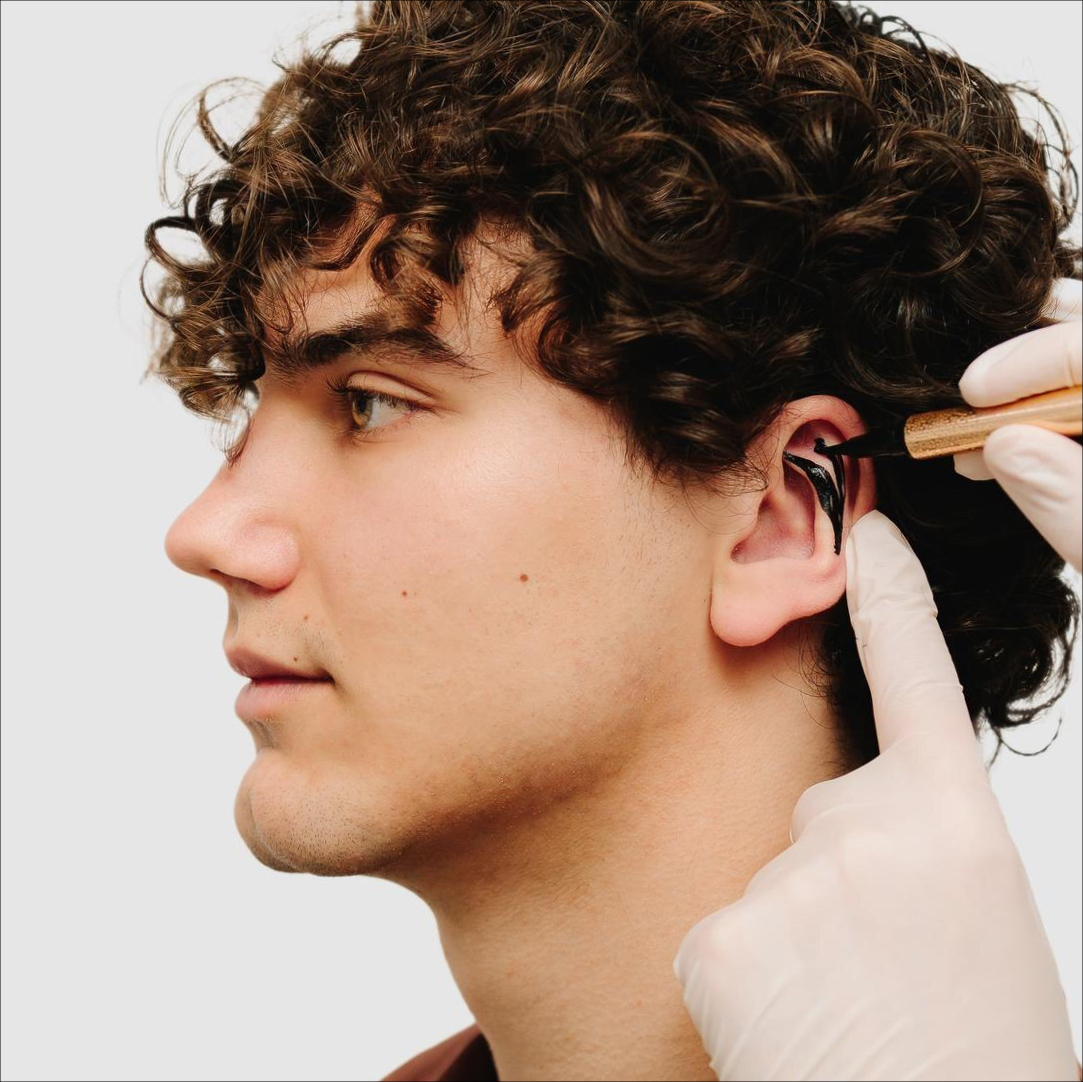Protruding ears are a common aesthetic issue in society, usually congenital. It is characterized by ears positioned more openly and forward relative to the head. While it doesn’t directly pose a health problem, it can affect individuals psychologically and socially, especially from childhood. Protruding ear surgery, medically known as otoplasty, is a surgical procedure performed to permanently correct this issue.

Protruding ears occur when the angle between the ear and the head is greater than normal. Typically, the angle between the ear and the skull is around 30°, but in protruding ears, this angle can reach 40-45°. This causes the ears to appear prominently protruding forward and outward. While it usually affects both ears, in some individuals only one ear may be affected.
Protruding ears can be genetically inherited or result from certain developmental anomalies of the ear cartilage. Particularly, an underdeveloped antihelix fold or overdeveloped ear cartilage can trigger this aesthetic problem.
Protruding ear surgery is performed entirely for aesthetic and psychological reasons. The reasons for this operation include:
Self-confidence issues: Especially during childhood and adolescence, situations like being mocked or excluded in social circles can negatively affect self-confidence.
Aesthetic concerns: Prominent ears can affect hairstyle choices and overall facial aesthetics.
Correction of asymmetrical ear appearance: In some individuals, one ear may be more protruding than the other.
Social and professional concerns: Protruding ears can be problematic, especially in professions where appearance is important.
Protruding ear surgery can usually be performed on children from the age of 5-6. By this age, ear cartilage has largely completed its development. Early otoplasty allows the child to address this issue before starting school and can prevent psychological trauma.
For adults, otoplasty can be performed at any age. Before the surgery, general health condition is evaluated, and the individual’s expectations are discussed in detail.
Protruding ear surgery is usually performed under local anesthesia and takes about 45 minutes to 1 hour. For children, general anesthesia may sometimes be preferred.
The surgical stages are:
Making the incision: An incision is made behind the ear in an inconspicuous area.
Reshaping the cartilage: The ear cartilage is reshaped using special suturing techniques, bringing the ear closer to the head.
Suturing: The incision is closed with aesthetic sutures.
Bandaging: Post-surgery, bandages are applied to maintain the ear’s new shape.
During this procedure, ear symmetry is maintained, and a natural appearance is aimed for.
The recovery process after otoplasty is quite comfortable. There may be mild pain, swelling, and bruising in the ears for the first few days. These usually decrease within a week. The process is made comfortable with pain relievers and antibiotics prescribed by the doctor.
Things to know about the recovery process:
A head bandage is worn for the first 3-5 days, followed by a lighter headband recommended for 2-3 weeks.
The ears appear close to normal after the first week.
One can return to social life and school after a week.
Sports requiring physical contact should be avoided for 4-6 weeks.
It’s a permanent and effective solution.
It provides psychological relief to the individual.
It provides an aesthetically more harmonious appearance with the face.
It allows children to start school with more self-confidence.
It allows a quick return to daily life with a short recovery period.
Protruding ear surgery is suitable for all individuals who are uncomfortable with the appearance of their ears, are in good physical health, and have realistic expectations. It’s especially recommended for children in the preschool period. Adult individuals can safely undergo this operation at any age they wish.
As with any surgical procedure, there are some low risks in protruding ear surgery. However, these risks are minimal when performed by an experienced surgeon.
Potential risks include:
Infection
Bleeding
Asymmetry in the ears
Suture dehiscence or scar formation
All these risks can be minimized with proper surgical technique and correct care.
The cost of prominent ear surgery can vary depending on factors such as the patient’s ear structure, the hospital where the surgery will be performed, the type of anesthesia, and the surgeon’s experience. A preliminary examination and evaluation are necessary for accurate pricing information. During the consultation, the patient’s expectations are also assessed in detail.
Prominent ear surgery (otoplasty) is a safe procedure that aesthetically enhances the ears to appear more natural and harmonious with the face. This procedure, applicable to both children and adults, positively impacts quality of life by boosting self-confidence. Thanks to the short operation time and quick recovery process, aesthetic concerns can be addressed practically.
If you are experiencing prominent ear issues and this is affecting you aesthetically or psychologically, you can also consult with an expert surgeon to obtain detailed information about otoplasty.
This site has been prepared to inform visitors and does not provide health services.
Please consult a doctor for diagnosis and treatment.